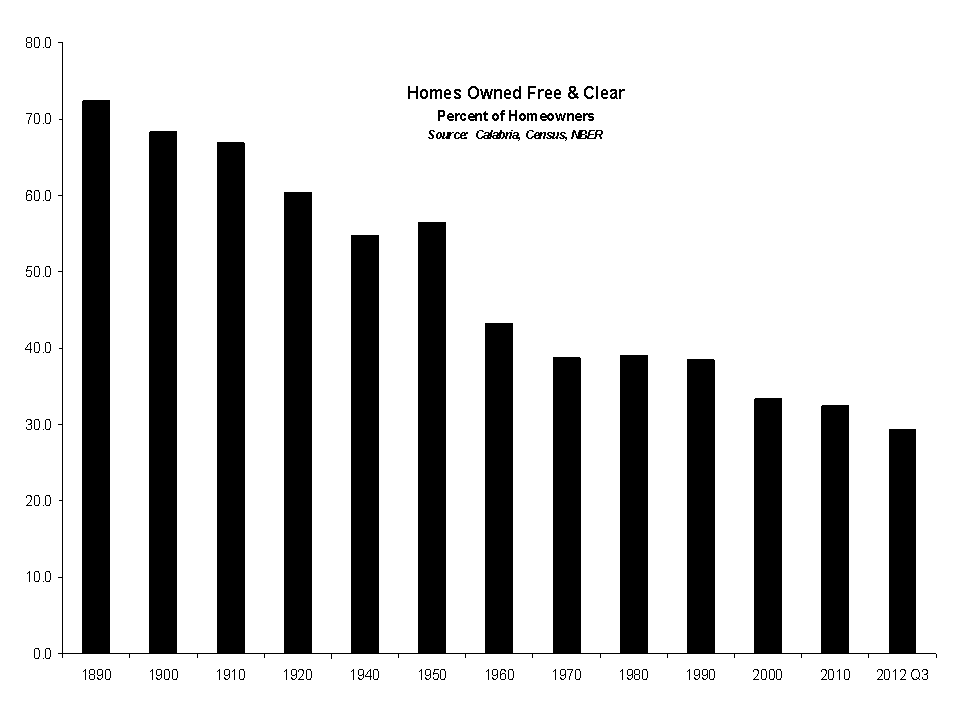Mark A. Calabria | The Cato Institute | 4 February 2013
http://www.cato.org/blog/long-run-decline-actual-homeownership
It would be far more accurate to label U.S. federal homeownership policy, U.S. mortgage policy. For the primary means of “extending” homeownership, via federal policy, has been the massive increase in mortgage debt. Sadly the actual trend increase in homeownership has been close to nothing since 1960.
If the ultimate intent of housing policy is to help build wealth and enable families to have something to pass along to future generations, then the right measure should be home equity. Even better measure would be the percent of homeowners who own their homes free and clear, that is without any mortgage. As long as there is any mortgage, even a small one, the bank has some ability to foreclose if you are in default. Setting aside the fact that the government can come take your home, with or without a mortgage, it’s hard to say you really “own” it unless it’s all yours.

Currently the percentage of homeowners that own without any mortgage is just under 30 percent. Prior to 1960, an actual majority of owners held their homes with no mortgage at all. For most of American history, the typical homeowner did not have any mortgage, not having to answer to a bank and also having some wealth to pass along to future generations. The primary impact of US homeownership policy has not been to increase homeownership, but to increase debt along with driving up house prices. Not a bad outcome if you’re a mortgage banker or a real estate agent. But not exactly a good deal for home buyers. Yes this has also helped increase the average size of homes, but helping everyone live in a McMansion hardly seems like a compelling public policy goal. And yes, reducing our reliance on debt for purchasing a home would result in lower prices, a huge win for renters.
Recent Comments